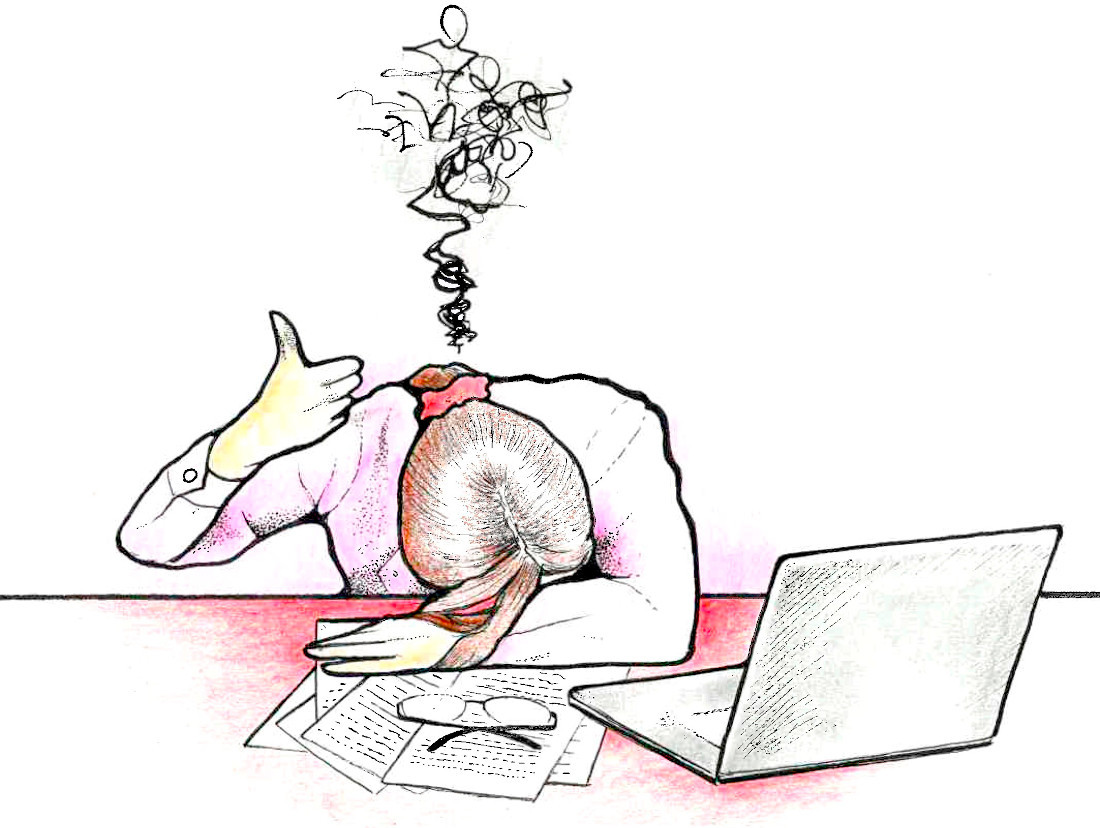Preventing burnout among students
Ways to navigate stress and time management in university
In the 2022 Canadian Student Wellbeing Survey, 53 per cent of students attending post-secondary education reported feeling stressed while balancing school commitments, jobs, extracurricular activities and their health and wellbeing.
Igal Press, a third-year University of Winnipeg (U of W) honours student in mathematical physics, says the school’s physical environment can impact his mental health. Most of Press’ classes take place in Lockhart Hall rooms without windows.
“I usually sit in (class) for hours at a time every day,” he says. “I basically just try to go out into the sunlight and be a plant – to photosynthesize and get some light and vitamin D.”
It’s common for students to feel stressed or overwhelmed as in-class exercises, readings, assignments and studying for exams overlap with other commitments.
According to the American Psychological Association, burnout refers to “physical, emotional or mental exhaustion, accompanied by decreased motivation, lowered performance and negative attitudes towards oneself and others.”
The Canadian Student Wellbeing Survey reported that 47 per cent of students aged 18 to 19 seriously considered withdrawing from university in 2022, up from 29 per cent in 2021.
The survey also found that three in five students aged 18 to 21 and one in two students 22 or older felt stressed say they felt stressed every day last year.
Press says he believes first- and second-year students are often the quickest to experience burnout because they are still developing study habits and skills to support their individual learning and success.
For example, Press says 40 students were originally enrolled in one of his first-year physics courses. Now, there are days when he’s the only student to show up for class, which means he essentially learns one-onone with his professor. While this reduction can’t definitively be attributed to student burnout, Press believes it’s still a factor in student retention.
“How to deal with the burnout, when it comes, will help lower dropout rates,” Press says. “(Students) quit because they’re burnt out, and they don’t have any coping mechanisms.”
Post-secondary students across Canada say having greater access to financial aid, smaller class sizes, 24/7 online academic support on and off campus, more student-run support groups and health and wellbeing services are a few ways to reduce burnout among students.
Grace Slivinski, a fourth-year psychology student at the U of W, says she experienced burnout during the transition to online learning, especially when she couldn’t be around other students or had multiple assignments due at the same time.
To increase productivity, she sets a timer and tries to work without distractions for blocks of two to three hours.
“I think the psychological part of burnout is worse, because I’m still thinking about what I have to do, as opposed to having done it,” Slivinski says. “I find that I function better under a little bit of pressure.”
Andrea Johnston, a counsellor at the U of W’s Student Wellness Centre, says “the pace of work that some students endure leaves very little time and energy for wellness pursuits and taking care of mental health.”
She says it’s important for students to understand the signs and symptoms of burnout. Each student should check in with themselves, monitor their own needs and plan breaks.
Exercising, practising mindfulness meditation, creating realistic routines and establishing healthy boundaries and coping mechanisms can reduce symptoms of burnout.
Slivinski says activities outside of class like painting, spending time with friends, being in nature and learning jiu-jitsu help her prevent exhaustion.
“I feel like all of us, we want to live a full life and contribute in the ways that we can, love the people around us as best we can and do as good as we can in school and work,” she says. “If you’re burnt out, you’re operating at a very small capacity.”
Press says he enjoys rock climbing, reading, cooking and baking. He advises students to have a healthy mixture of intellectual and creative activities in their lives. He also says making friendships and engaging with others in class can improve a student’s university experience. Although it can be daunting for people who are introverted or have social anxiety, pushing through those limitations can bring students together and support them in times of stress such as participating in study groups and having a reliable person to count on for lecture notes in the case of an absence.
Published in Volume 77, Number 17 of The Uniter (February 2, 2023)







